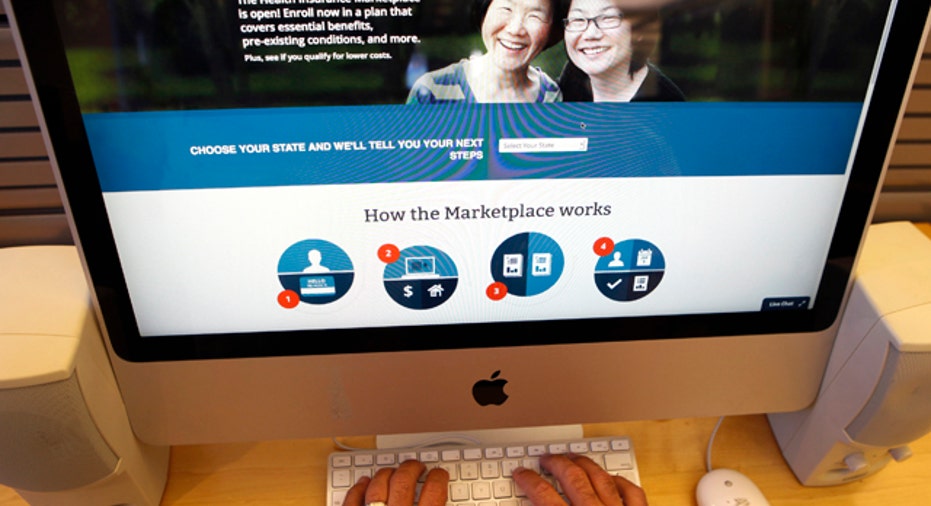New ObamaCare Numbers: 8M Enrollees with 28% Being Young Individuals

The enrollment figures for the Affordable Care Act’s first open enrollment period continue to climb, as do the number of young enrollees, according to the latest statistics from the Department of Health and Human Services.
The department announced 8,019,763 people have selected plans on both state and federal exchanges through April 19. This includes enrollment activity after the formal end of open enrollment on March 31 that was extended for those who had continued issues signing up or life circumstances that caused them to enroll late.
The latest enrollment numbers didn’t differ much from President Obama’s April 17 announcement that 8 million people had signed up for coverage, but the report did provide a clearer picture of just who signed up.
The demographic breakdown shows that 2.2 million (28%) of the enrollees were young people, ages 18-34. That number increases to 2.7 million when including those ages 0 to 34.
HHS also announced that more than 4.8 million people had enrolled in Medicaid and the Children’s Health Insurance Plan (CHIP) through the end of March 2014.
The original goal for the first enrollment period was 7 million people with 2.7 million of them being young and healthy enrollees between 18 and 34. Young people are needed to offset the costs of insuring older and less healthy people on exchanges, who can no longer be charged more for their care, under the Affordable Care Act.
The report also shows that 2.6 million enrollees have signed up on state-based marketplaces and 5.4 million on the federally-facilitated exchange. Of the 8 million, 54% are male and 46% are female. In addition, 85% had selected a plan with financial assistance.
Under the ACA, every individual in the country has to have insurance by the end of open enrollment period, which passed on March 31, or they will face a fine of $95 a year or 1% of their annual income for failing to comply.
Questions Remain About Payments
The enrollment figures include everyone who has selected a plan on the exchanges. The insurance industry typically defines someone as enrolled once they made their first month’s premium payment. It is not yet clear how many people have made that payment, although the House Energy and Commerce Committee’s Oversight and Investigations Subcommittee is reporting that on the federal marketplace, only 67% had made their first month’s premium payments through April 15.
The subcommittee sent letters to every insurer participating on the federal exchange, Healthcare.gov, requesting payment information.
HHS Secretary Kathleen Sebelius had reported in late March that between 80% and 90% of enrollees had made their premium payments. HHS is pushing back against the subcommittee’s report.
“These claims are based on only about half of the approximately 300 issuers in the Federally-facilitated Marketplace and they do not match up with public comments from insurance companies themselves, most of which indicate that 80 to 90 percent of enrollees have paid their premium. Additionally, given the significant surge in enrollments at the end of March, it stands to reason that not all enrollees would have paid by the date of this so-called report since many people’s bills were not even due yet,” HHS spokesperson Erin Shields Britt said in an email statement to FOXBusiness.com.
Yevgeniy Feyman, a fellow at the Manhattan Institute, says the likelihood of payment increases with age, which isn’t a good sign since young people’s participation is important.
“The investigation found that only 25% had paid between the ages of 18 and 34,” Feyman says. “It is not good to see that. But on the other hand, this is only through April 15, so we don’t have information on the surge that may have happened after that date.”
That being said, Feyman argues payment data may not be the best “talking point” to use against ObamaCare.
“This will work itself out,” he says. “This could be problematic for Democrats to deal with, but not harmful to the law itself.”
Analysts are already projecting double-digit increases in premium costs for 2015, which are priced in, but it’s based on risk pool composition and not payment data, Feyman points out. If and when the public is privy to payment data, it will be at a politically-beneficial time, he says, as this could impact democrats during the midterm elections.
“Eventually they have to release this data,” Feyman says. “For months they were claiming they didn’t have it, and there is no reason to keep it hidden.”



















